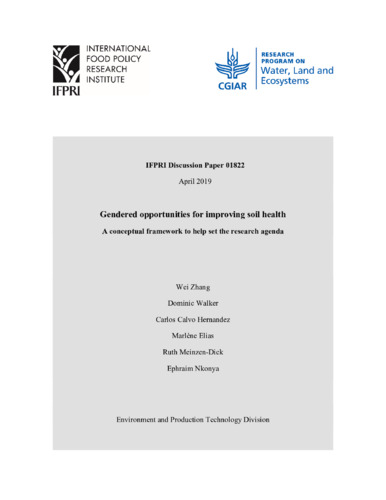Gendered opportunities for improving soil health: A conceptual framework to help set the research agenda
Healthy soils play a critical role in supporting agricultural productivity, climate change mitigation and resilience, and a range of ecosystem services. Degraded and poorly responsive soils cover large areas of Africa and represent the majority of poor farmers’ fields in certain regions. While there are hundreds of technical options for improving the sustainability of land management and preventing or reversing degradation, there are many sociocultural, institutional, economic, and policy barriers hindering their adoption at large scale. At the same time, there is an emerging consensus within the international development community that gender equality and women’s empowerment are both an end in themselves and an important means for achieving a range of economic and social development objectives such as improved food security, child nutrition and education, and women’s health. Yet, gender inequality remains a wicked problem, whose deep-seated socio-economic and ideological causes are difficult to recognize and address, and which require context- and culture-specific understandings and approaches, involving multiple stakeholders with different and sometimes conflicting interests and different positions within power hierarchies. There is an urgent need to make more rapid progress on restoring and sustaining soil productivity and ecosystem functions and also to leverage soil health management for progress on gender equality. While there are important interconnections between soil health and gender equality and empowerment, these are seldom recognized, and have not been addressed in a coherent or concerted manner. In this study, we have reviewed relevant gender literature and proposed a conceptual framework to help illuminate important gender considerations for soil health and land management. These considerations are essential for identifying gender-based constraints, opportunities, and unintended consequences in promoting soil management technologies. Moreover, the application of the framework can help guide in priority setting with respect to where gender-responsive interventions are essential. We make several recommendations for setting priorities for gender-soil health research.

